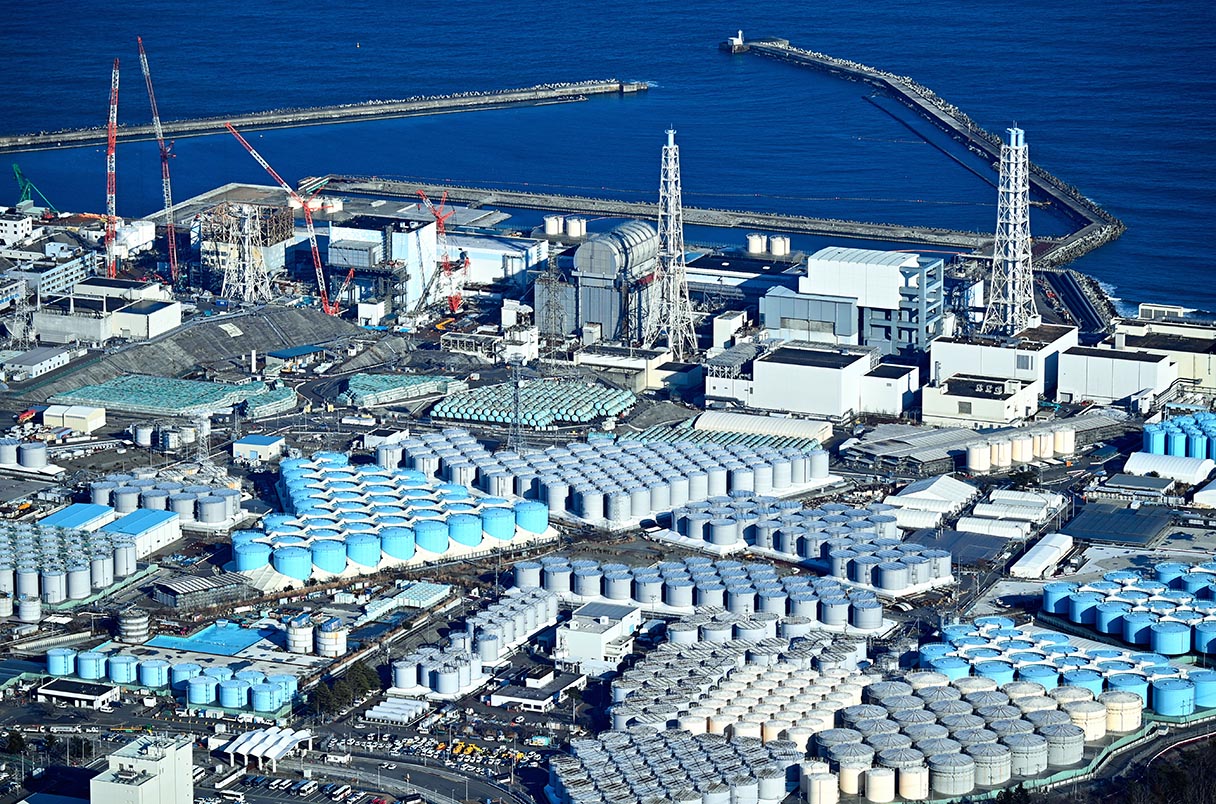The release of the fourth batch of treated radioactive water from the crippled Fukushima No. 1 nuclear power plant into the sea concluded Sunday, with the next round possibly starting next month, the plant’s operator said.
Tokyo Electric Power Company Holdings released about 7,800 metric tons of processed water as planned in the latest round, which began in late February. Abnormal tritium levels have not been detected in nearby waters since the first discharge in late August.
The water has passed through an advanced liquid processing system capable of removing most radionuclides except tritium.
Tepco released around 31,200 metric tons of treated water in the four rounds of discharge in the current fiscal year through March.
Although Tepco has detected low levels of tritium in samples collected near the outlet into the sea, they were far below the World Health Organisation’s limit of 10,000 becquerels for drinking water.
Meanwhile, the head of the UN atomic agency observed firsthand the Fukushima Daiichi nuclear power plant’s ongoing radioactive wastewater discharges for the first time since the contentious program began months ago and called it an “encouraging start.”
International Atomic Energy Agency Director-General Rafael Grossi watched treated radioactive water being mixed with massive amounts of seawater and examined a water sampling station. He was escorted by utility Tokyo Electric Power Company Holdings president Tomoaki Kobayakawa.
The discharges have been opposed by fishing groups and neighboring countries including China, which banned all imports of Japanese seafood immediately after the release began.
An 2011 earthquake and tsunami damaged the Fukushima plant’s power supply and reactor cooling functions, triggering meltdowns of three reactors and causing large amounts of radioactive wastewater to accumulate. After more than a decade of cleanup work, the plant began discharging the water after treating it and diluting it with seawater on 24 August, starting a process that’s expected to take decades.
Grossi last visited the plant in July after issuing an IAEA review predicting only negligible impact from the discharges. An IAEA comprehensive report later concluded that the discharges meet international safety standards.
Grossi said an IAEA office and a laboratory at the plant have been carrying out their own, independent evaluations of the discharges, and results had been in line with what they expected.
“We never say ‘this is done’ or ‘this is okay’ because there is a long way to go,” he said. “I would say it’s a very positive and encouraging start.”
Grossi also met with local officials and representatives from fishing and business groups and reassured them that the discharges are being carried out “with no impact to the environment, water, fish and sediment.”
“There is no scientific reason to impose any restriction on products coming from us,” Grossi said.
He later told reporters that he is aware of “observations made by China” and noted that “I have an ongoing and very constructive dialogue with China regarding the operation here.”
He asserted that “the authority and the impartiality of what the IAEA does cannot be put into question,” adding that he was ”very confident that the dialogue with China and with other countries will be constructive and we will be able to provide all the assurances as required.”
China’s ban on Japanese seafood mostly hit scallop exporters in Hokkaido. Tokyo has earmarked a fund of more than 100 billion yen (US$680 million) that includes compensation and other support, including measures to help find other export destinations.
Despite earlier fears that the water discharge would further hurt Fukushima’s hard-hit fishing industry, it has not damaged its reputation domestically.
Grossi stressed the importance of “transparency, technical accuracy and wide open, honest dialogue and consultation.”














